Abidjan’s cruise port sits at the Ébrié Lagoon (5°18’N, 4°01’W) and connects to the ocean through the 15-meter-deep Vridi Canal – it’s basically West Africa’s big shipping hotspot.
Getting there from the airport? Grab a taxi, but brace yourself for a 45-90 minute ride depending on traffic, or hop on the hourly ferry across the lagoon if you’re feeling adventurous.
Need parking? Better book ahead or use one of the commercial lots nearby that run shuttles.
The port’s got all the modern stuff you’d expect, and if you’re cruising in March, you’re in luck – warm 31°C days with hardly any rain.
Keep reading to discover the cool history of this bustling port and what’s worth checking out nearby.
Map of Abidjan Cruise Ship Port
Where is The Port Located?
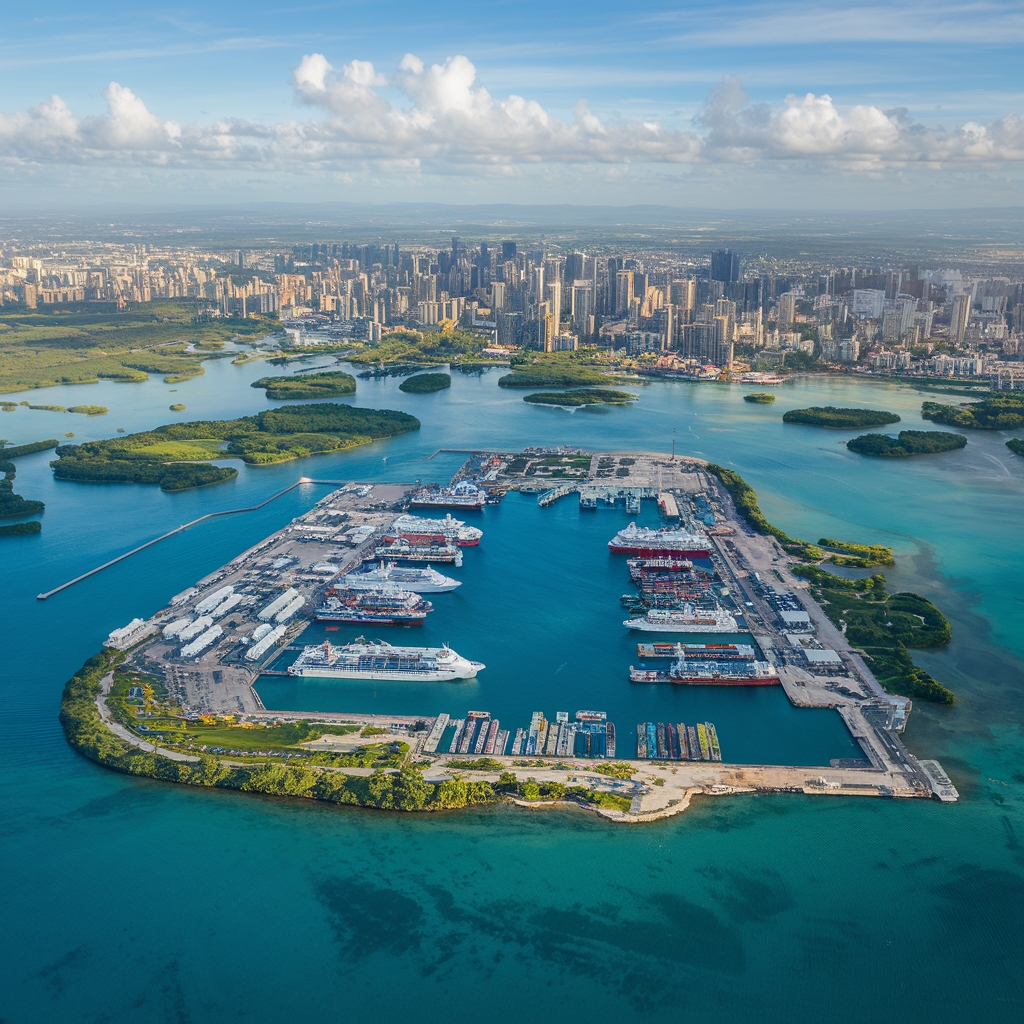
Abidjan’s port location is pretty special compared to other cruise spots – it’s right at a strategic maritime crossroads. You dock along the gorgeous Ébrié Lagoon where it meets the Gulf of Guinea, putting you in the perfect spot on West Africa’s buzzing coastline.
If you’re checking coordinates, it’s around 5°18’N latitude and 4°01’W longitude, which is super close to Abidjan’s lively downtown. Big ships have to cruise through the impressive Vridi Canal, which can handle vessels with drafts up to 15 meters (50 feet). The whole setup makes Abidjan a major shipping hub that’ll stick in your memory.
How to get to the port, by air, train, road
How to get to Abidjan’s cruise port? If you’re flying in, you’ll land at Félix-Houphouët-Boigny International Airport about 16km away. Grab a pre-booked taxi or shuttle, but give yourself plenty of time – traffic can stretch the journey anywhere from 45 to 90 minutes.
Coming by train? You’ll pull into Abidjan Railway Station and then need to hop in a taxi to reach the port. Just check the SICF schedules before you travel – trains run on their own schedule around here!
Driving yourself? Take either the A1 or A2 highways, but brace yourself for the usual bottleneck along Boulevard de Marseille.
My personal tip? Try the ferry across Ébrié Lagoon – it leaves every hour from Gare Lagunaire du Plateau. Not only will you dodge the worst of the traffic, but you’ll get some pretty sweet waterfront views as a bonus.
Port Parking Options
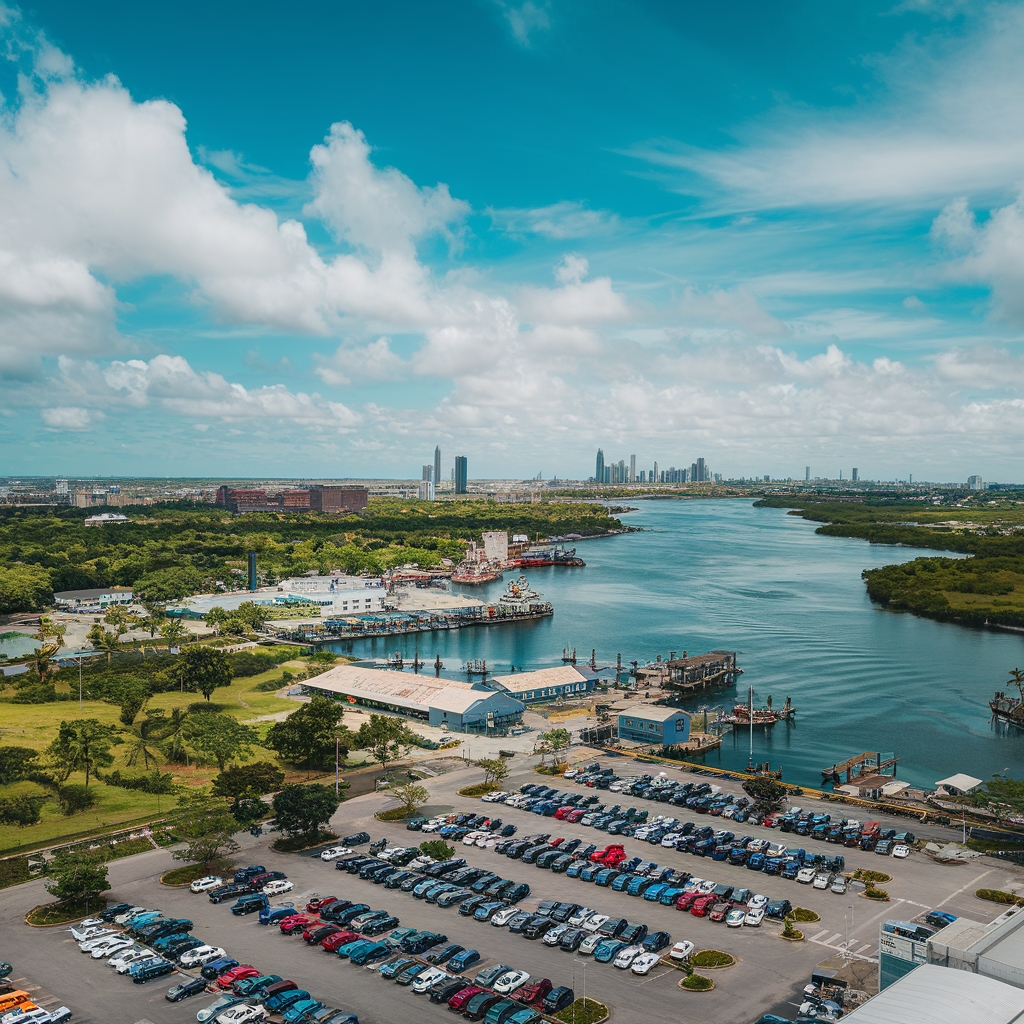
Arriving at the port? Now you’ve got to figure out what to do with your car. The Abidjan cruise terminal has some parking spots right there, but not tons – they fill up pretty quick. Rates aren’t too bad though.
If you’re heading out for more than a few days, you might want to:
- Snag a spot ahead of time through your cruise company
- Try one of the commercial lots nearby (they’ll shuttle you over)
- Splurge on valet parking during busy times
- See if your hotel has any park-and-cruise deals
- Skip the parking headache entirely and just grab an Uber
Most parking places take cards or cash, and you can usually score a discount if you’re staying longer or book ahead.
Local Transport & Transfers
Local Transport & Transfers
When you hop off your cruise ship in Abidjan, you’ve got five main ways to get around. Taxis bunch up right at the port entrance—just make sure to haggle your fare before getting in since meters are pretty much non-existent, and it helps to have your destination written down in French. Your cruise line runs free shuttles to CAVA market throughout the day, but they won’t take you anywhere else.
Got local data? Grab an Uber for hassle-free pricing, though you might need to cool your heels for 8-12 minutes. Looking to venture further out? Private transfers can whisk you away to the UNESCO site of Grand-Bassam (about 45 minutes) or the gorgeous Assinie-Mafia Beach (a solid 1.5-hour drive).
Pro tip: Legit port taxis have yellow “PT” plates, and don’t forget to bring cash—it’s a must around here.
Port Terminal Facilities and Accessibility
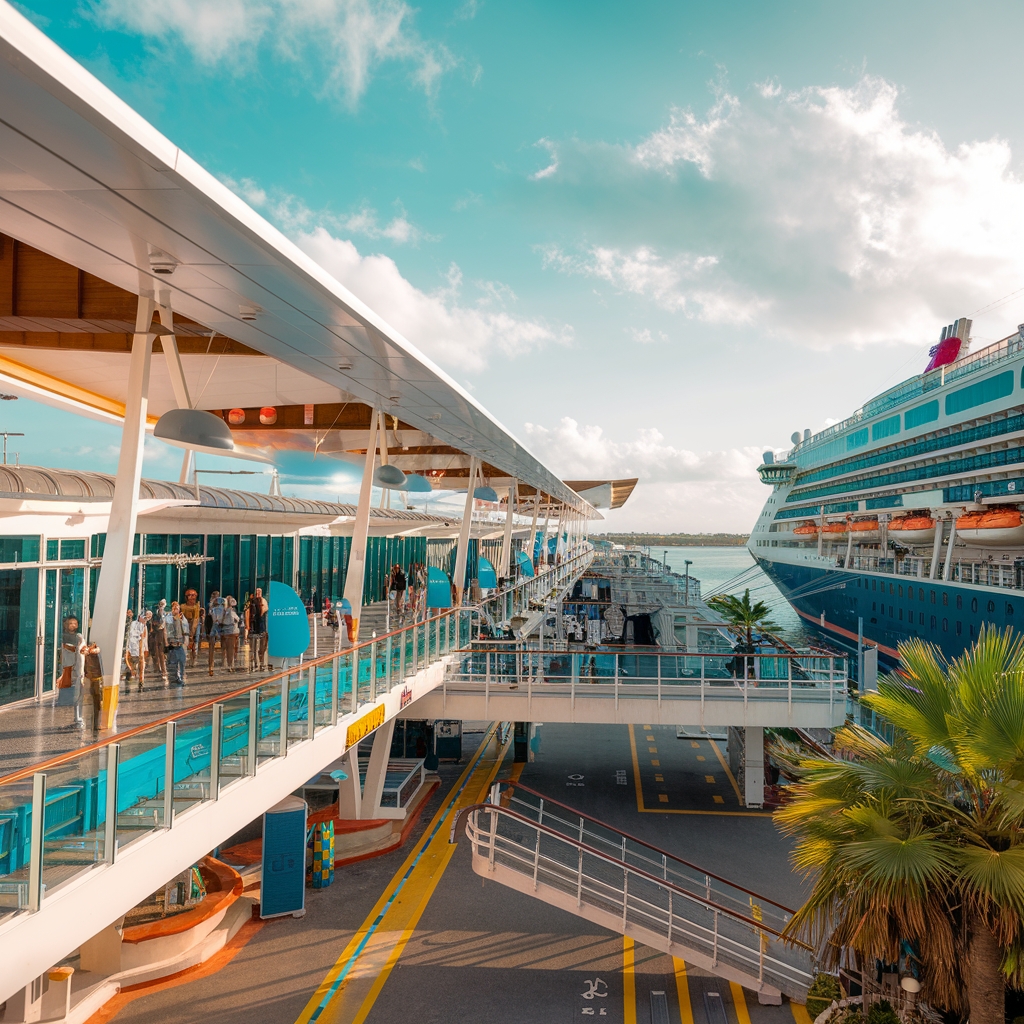
Beyond transportation, Abidjan’s port really stands out with facilities that can go toe-to-toe with major European ports. The cruise terminal sits right inside the multi-cargo setup, so you won’t have trouble finding what you need during your stop.
- Five modern berths deep enough (11.5m draft) for the big cruise ships
- Passenger facilities conveniently placed near the Ro-Ro Terminal so getting off is a breeze
- Triple-certified safety standards to keep you protected while you’re in the port
- Taxis and buses pick up right outside, making it easy to get to city sights
- Smart GPS tracking means you won’t waste time waiting around, even when things get busy
Things to Do Before Your Cruise in a Day
Got a day before your cruise kicks off in Abidjan? Here’s how to squeeze the most out of it! Head to the Plateau business district first – you can’t miss La Pyramide with its weird and wonderful brutalist style, then climb up to St. Paul’s Cathedral for some killer views of the city.
Don’t skip the Musée des Civilisations – it’s packed with over 20,000 artifacts that tell the story of Ivorian culture. Trust me, it’s worth it.
Nature buff? Banco National Park is your spot. Wander the trails through lush rainforest where you’ll spot plants and birds you won’t see back home. Before heading to your ship, swing by the Centre Artisanal de la Ville to grab some authentic souvenirs – the Korhogo cloth and wooden masks make great conversation pieces!
Got a few extra hours? Jump on a guided tour to Grand Bassam. It’s UNESCO-listed for a reason – colonial buildings and gorgeous coastal views that’ll fill up your camera roll.
Walks near the port
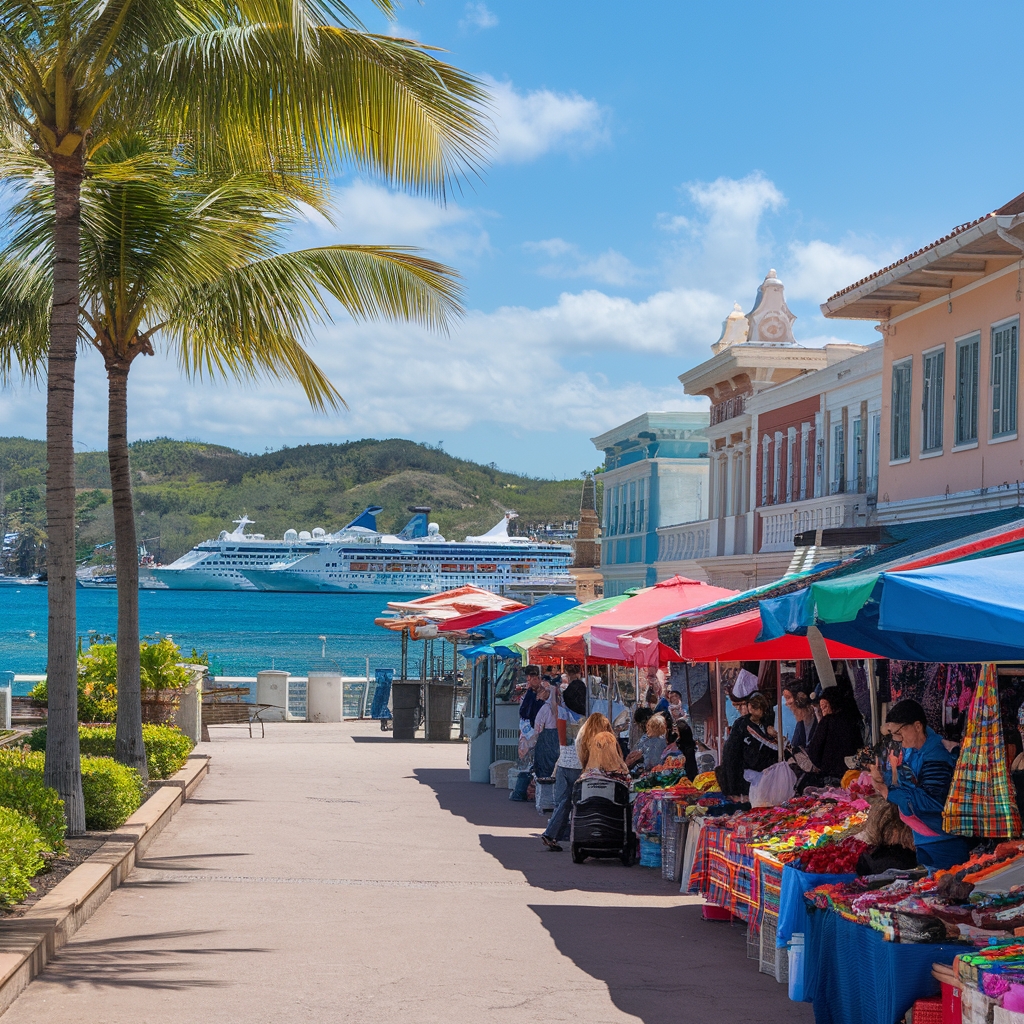
Several amazing walks are waiting for you right by Abidjan’s cruise port, each offering a cool look at Ivorian culture. Stay safe though – hook up with English-speaking guided tours instead of wandering around unfamiliar spots by yourself. The Saturday tours kick off from Place de la République at 9 AM, where bilingual guides will take you through Abidjan’s must-see places.
- St. Paul’s Cathedral rocks some modern architecture with gorgeous stained-glass
- Colonial District is packed with early 1900s government buildings
- Banco National Park offers awesome 3-hour rainforest hikes with nature experts
- Azito Village lets you check out local artisans doing their thing by the lagoon
- Grand-Bassam UNESCO site has really well-preserved colonial buildings from 1893-1914
Dining and Shopping
Dining and Shopping
When your ship pulls into Abidjan, you’ll discover an amazing food and shopping scene that really shows off Ivorian culture. Don’t miss trying local favorites like attieke with grilled fish or the slow-cooked kedjenou at Le Bistrot Palmier – they nail those coastal flavors perfectly.
Got a craving for something different? The Lebanese mezze at Le Méchoui hits the spot, or grab some Italian at Regina Margherita. Lots of cruise packages throw in cultural food tastings too, which is a nice bonus.
Make sure to check out the handcrafted jewelry and wooden carvings at Vridi Plage, or wander through Marché de Treichville for some killer spices and textiles. They make great keepsakes from your Ivory Coast adventure!
Accommodation near the port
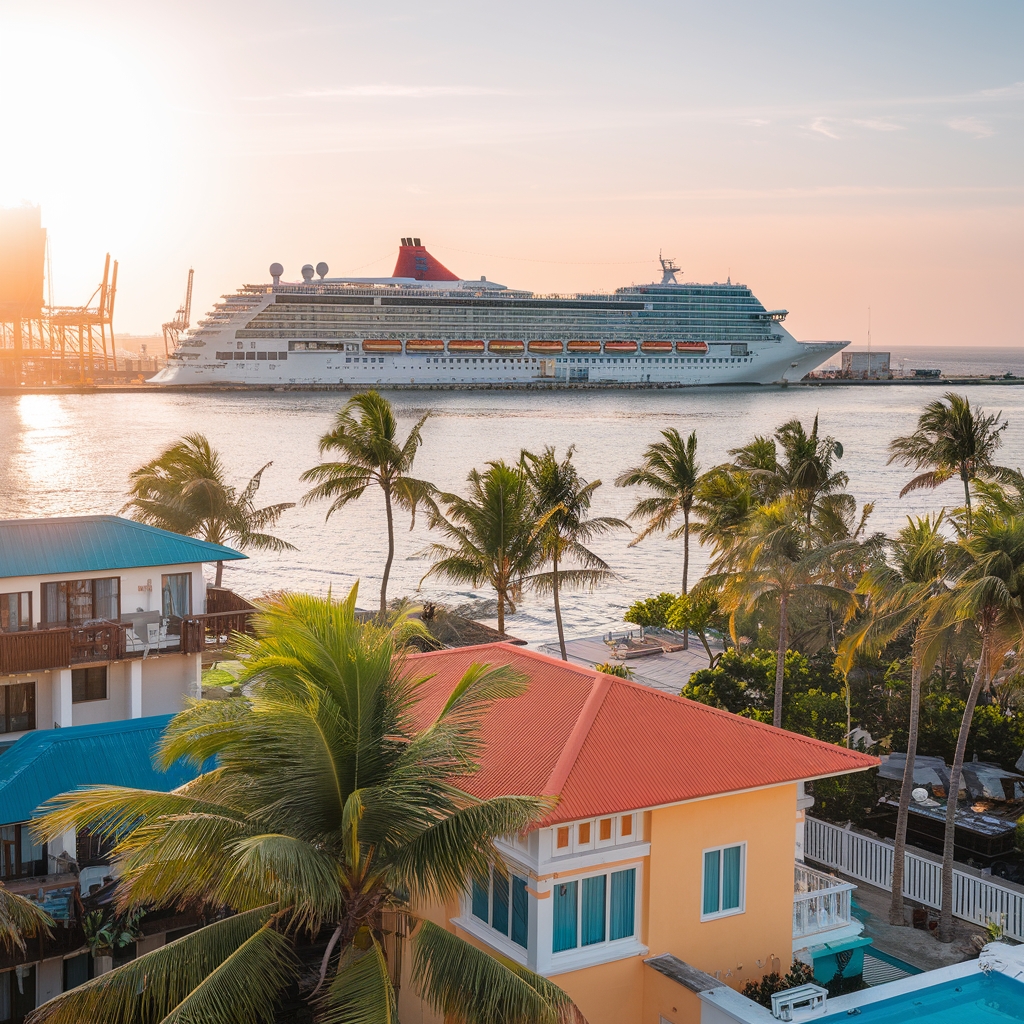
Accommodation near the port
Looking for a place to crash near Abidjan’s cruise port takes a bit of homework. The new cruise dock that opened in 2023 doesn’t have hotels right next door. Most places to stay are in the city centers, usually a good 30+ minutes away thanks to Abidjan’s crazy traffic.
- Oceania Cruises hooks you up with partner hotels offering pre/post-cruise packages
- Check out Expedia-AARP for aparthotels, B&Bs, and guest houses across different budgets
- Hotel Etoile du Sud is popular with cruise folks and has space for events too
- Hop on the cruise line shuttles to get to central spots like CAVA
- Booking through your cruise line gets you guaranteed rides and some sweet perks
Customs & Immigration at The Port
Navigating customs and immigration at Abidjan’s port isn’t exactly a walk in the park, but with the right prep, you’ll manage. Make sure your vessel turns in crew lists, inventories of bonded stuff, and declarations about narcotics when you dock.
Got personal items worth more than 1 million CFA (roughly $1,600)? You’ll need to get an inspection certificate. And don’t even think about bringing in weapons, dangerous critters, drugs, or adult materials – they’re all on the no-go list.
Remember to fly the national flag during daylight hours (6 AM to 6 PM) while you’re in port. Clearance usually takes anywhere from a couple days to a week, though unusual cargo might keep you waiting longer.
Local Currency & Payment Options

Three Things to Know About Money in Abidjan
The West African CFA franc (XOF) runs the show here – it’s locked to the Euro at around 656 XOF per EUR, and you won’t get far trying to use anything else.
Money tips to save headaches:
- Swap your cash before landing (airport exchanges will rob you blind)
- Keep plenty of small bills (XOF500-2000) for haggling and tipping
- Cards? AmEx and MasterCard work in the city, Visa… not so much
- ATMs are easy to find in Abidjan but good luck in the countryside
- Don’t leave with leftover XOF – nobody wants it outside West Africa
Emergency Contacts
Emergency Contacts
Smart sailors know to keep important emergency numbers close when hitting unfamiliar ports. While checking out Abidjan, keep these local contacts in your pocket:
Got a port emergency? Reach the Port Special Police at 225-21-22-01-89 or 225-21-24-04-66. Need something like Coast Guard help? The Port Security Group (GSP) has your back at 225-21-35-26-70.
Boat troubles? Call the Harbour Master’s Office. If drama happens after hours, ring the Port’s General Management at 225-21-23-80-00.
History of The Port
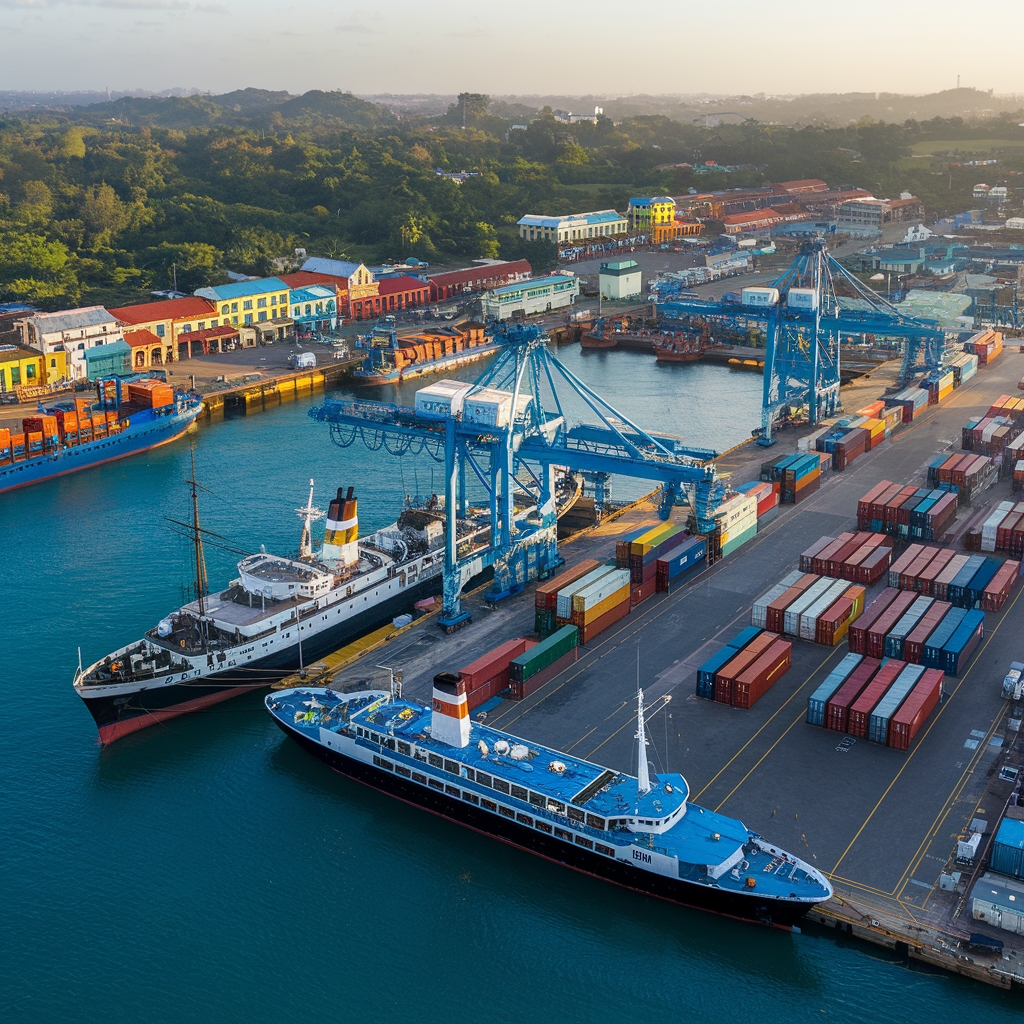
History of The Port
Most cruise visitors only see today’s busy harbor, but Abidjan’s port has quite a story behind it, stretching back to the mid-1900s. What started as a small colonial outpost transformed into West Africa’s shipping giant after Côte d’Ivoire broke free from colonial rule.
- Got its official start in 1951 when they finished digging the game-changing Vridi Canal
- Grew from shipping basic stuff like cocoa beans to handling massive container operations
- Made headlines in 2023 when it welcomed its biggest cruise ship ever – the 286m Zuiderdam packed with 2,128 travelers
- Acts as a lifeline for landlocked neighbors Mali, Niger, and Burkina Faso
- Just kicked off a massive €400M upgrade to handle a whopping 2.5M containers each year
Best Times of Year to Cruise from The Port
When planning your Abidjan cruise, timing really matters. March hits the sweet spot with comfortable 31-32°C temperatures and hardly any rain – perfect for exploring! That’s when ships like Nautica and Norwegian Dawn first show up again after the off-season.
Steer clear of June unless you love getting soaked – we’re talking 374mm of rain that can mess up port schedules. Weirdly enough, November through February has great weather but zero cruise traffic.
Culture buffs should aim for the dry season (November-April) when coastal festivals are happening all over. If you’ve got your eye on the Seven Seas Mariner, the “little dry season” in July gives you a nice break from the usual downpours.
Frequently Asked Questions
Are There Any Safety Concerns When Exploring Abidjan During Port Stops?
Yes, you need to keep your eyes peeled for crime in Abidjan – armed robberies and break-ins happen. Watch out around the port where they store dangerous stuff like ammonium nitrate. And don’t forget those pesky mosquitoes carrying diseases while you’re wandering around the city.
What Local Cultural Etiquette Should Cruise Passengers Be Aware Of?
Keep that right hand handy for handshakes and eating – it’s the polite way to go. Dress on the modest side with shoulders and knees covered (save the skimpy stuff for the ship). Start conversations with a friendly “Bonjour” and maybe ask how someone’s day is going. Oh, and don’t just snap photos of locals without asking first – nobody likes a surprise paparazzi!
Are Vaccinations Required for Visiting Abidjan During a Cruise?
You’ll definitely need that Yellow Fever shot—it’s basically your ticket in if you’re coming from countries with the disease. Smart travelers also get Hepatitis A and Typhoid vaccines before hitting Abidjan. And don’t forget malaria meds—mosquitoes there don’t mess around!
What Unique Souvenirs Can I Find Specific to Ivory Coast?
You’ll discover some seriously cool Ivorian keepsakes during your trip! Look for vibrant kente cloth, masks carved by local artisans, beautiful clay pottery, and gorgeous beaded jewelry. Grab some bold wax prints, authentic djembe drums, or handwoven raffia baskets too – they’re all perfect reminders of your adventure through Ivory Coast’s rich culture.
Is English Widely Spoken in Abidjan or Should I Learn French Phrases?
You probably shouldn’t bank on English getting you far in Abidjan. It’ll go a long way if you pick up some basic French phrases since that’s what most people speak there. English mostly works in touristy areas and fancy hotels, but that’s about it.
